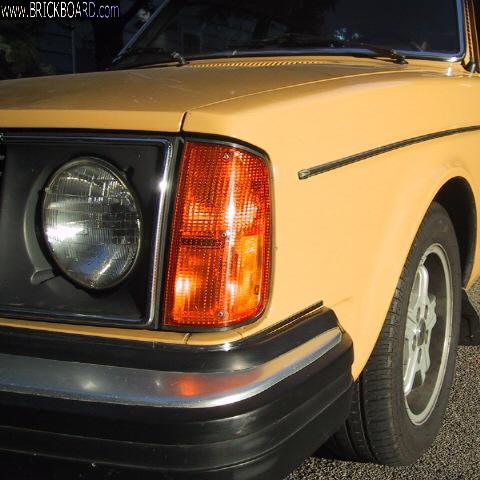|
all these volvo bushings that I have ever worked on have gone in the way you DON
T think they should. that is, for the trailing arm, for example---you would think that since the axel is pushing the car, that the firm, solid part of the bushing would go fore-aft, to take the punishment of driving the car, but it doesn't. instead, it goes in in such a way the the action of driving the axel to push the car has the greatest chance of deflecting the bushing. They all go in "as soft as possible" the rear trailing arm bushing has "down" marks, and the openings around the hourglass end up front and back, with solid rubber up and down (can soemone else verify this--I just did it, but don't want to be wrong). When you dump the clutch, and the axel surges forward to push the car, this bushing will deflect more in this position than if it were installed with the rubber fore-aft. Also, the bushing is not round, so the down mark may have something to do with that, also.
Based upon the above, I would install the panhard (track) rod bushings with the openigns side-to-side.
for the support (torque) rods, call volvo demolishers and try to simply get rods with solid bushings. there were two types, solid and hourglass. here in boulder, co, the brick fixers toss all rods with the hourglasses, and sell used solid bushed rods for $25 each. If you will install hourglass bushings, put the openings for-aft
Control arm bushings have three "hourglass" holes, so follow the instructions in the manual. There used to be bias and radial types depending on what tires you run. I assume there are no more bias type CA bushings anymore.
make a press from 2" pipe fittings for the rear trailing arms. there are links on the web, search for "trailing arm bushing volvo" and i bet you will find it. I broke a couple bolts doing this until I was more carefull about jig alignment--it must be rigged so that the bushing can enter the jig. mine caught a couple times and not knowing how much force was necessary, I broke some grade-2 bolts. when it is all lined up well, a 1/2-13 grade 2 should just do it without stretching, galling, breaking. you could just use a wood block to keep the "ears" spread, and a pipe coupling and sockets (if you got big ones) to press it in/out. i used a 2" electrical conduit threaded (not tapered) coupling and two 2" plugs with holes drilled in them. one plug needs to have the threads removed via lathe or grinding.
|

